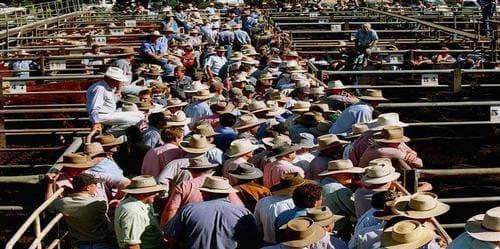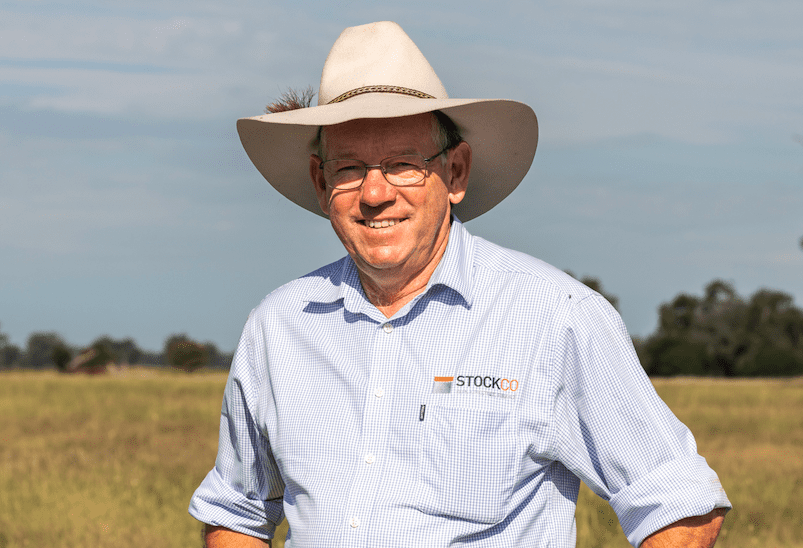THERE’S been evidence of cattle traders or ‘dealers’ returning to the market over the past month or two, as the intense heat starts to come off prices for many store stock descriptions.
Traders across Eastern Australian have largely gone absent over the past two or three years, as young cattle and breeding cattle prices sky-rocketed during herd rebuilding.
 Restockers with a paddock full of green feed were determined to purchase ‘anything on four feet’ over the past two years, sometimes at astronomical prices, scaring the traditional cattle traders into hibernation.
Restockers with a paddock full of green feed were determined to purchase ‘anything on four feet’ over the past two years, sometimes at astronomical prices, scaring the traditional cattle traders into hibernation.
Cattle trading (our preferred definition is best described as short-term, more opportunistic buying, typically with cattle turned over within four to six months) has been a part of the Australian cattle industry forever, but has gone absent for the past couple of years’ of red-hot cattle prices.
As Beef Central reported earlier this week, the Eastern Young Cattle Indicator has continued to deteriorate since the start of this year, falling below 700c for the first time this week since February 2020. This time last year, the indicator was still 415c/kg higher than where it currently sits.
Since markets re-opened in January, the premium between restocker and feeder prices has narrowed rapidly since mid-February.
The softer cattle market has motivated more cattle traders to start to stir, as they look for attractive deals they can make a quick return on.
So how much margin is necessary these days to motivate a cattle trader to get out of bed?
“It’s got to be $500 a head gross these days, to make it worthwhile,” one veteran western NSW cattle buyer suggested to Beef Central yesterday.
“When you take transport, yard fees, agency commission (if an agent is involved), capital holding costs, (potential) agistment at $1/head/day ($150 a head alone on a five-month hold) and transaction levy into account, it can’t be anything less than minimum $500 gross margin – and ideally, more – to make a quid out of them,” he said. “Anything less than $300 gross would be giving money back.”
The cattle buyer suspected a lot of the recent dealer/trader buying activity was now happening not via saleyards, but via online auction, where trader buyers could find more of the ‘right’ type of animal.
There is no distinction between trader-type buyers and restockers in AuctionsPlus or NLRS reporting systems.
Growing evidence of trader activity
Regular Beef Central columnist Chris Howie acknowledged the recent trader trend, saying he had had two such phone calls in quick succession yesterday morning, regarding finance.
“They were from people who I would regard as being pretty savvy cattle traders,” Mr Howie said.

Chris Howie
“They said they had seen opportunity in the market, and wanted to move. Dry weather is having a bit to do with it.”
Mr Howie said the traders he had spoken to were looking at several classes of cattle:
- Well-grown heifers in light condition, due to the deteriorating season.
- Light-conditioned cows that had recently had a weaner taken off them, that could be freshened-up and sold later for slaughter
- Secondary, less desirable or ‘unattractive’ cattle, like dairy cross steers looked viable for trading activity at present.
- PTIC heifers and cows, with the intention of calving them down and selling them out in August-September as a cow-calf unit, or keeping the calf.
In the case of the young heifers, the strategy would be to freshen them up on winter feed or crop, and ‘bang them out’ in early spring. Depending on the weight they were bought at, they would go either as feeder heifers, or 2-4 tooth slaughter markets.
Manufacturing market types popular
“Cattle with frame are what traders are looking for at this time of the year,” Mr Howie said.
“They don’t want to be growing premium cattle on that quick trade. Pretty much anything that can be linked back to the manufacturing beef market (as opposed to prime beef) is the target of choice,” he said.
Traders had become more active again as the strength has gone out of the restocker market, Mr Howie said.
“Before, restockers had so much feed, it was ‘buy at all cost’, but that’s now died down dramatically, and the opportunity has re-arisen for the trader/dealer to be more selective, and pick his or her way through the market, and buy at the right money.”
Mr Howie said the areas from around Dubbo up to Roma that had missed out on rain and did not have crop in the ground, was the target sourcing area for some traders.
The buyers were typically coming from further south in regions like Wagga and into Victoria – carrying those trader cattle through the winter – perhaps in some cases receiving a bit of supplementary grain – for sale some time in spring.
“Five to six months would be a typical hold,” he said. “Some are trying to grab September money, when supply tightens.”
Mr Howie said trading had been around for “as long as we’ve had livestock in Australia.”
“Just as the drought broke, there were a few people who made a lot of money buying those little blow-away heifers that nobody wanted. They often bought those little heifers at $200-$300, and ended up selling them for $2000. Some of those traders set themselves up on deals like that, but the activity is gaining momentum again now.”
Prior to the 2019-20 drought, some traders were looking to buy steer calves for around $450-$500, and selling them some months on for $800.
“That used to be the margin, making a couple of hundred dollars on a $500 buy. But then we saw $1500 buy making a $1000 margin. But this year, we are seeing a lot of $500 losses on trading young cattle bought earlier at very expensive prices,” one NSW cattle market observer said.
“It’s the one-off traders who lost that sort of money I feel sorry for. Those who are trading regularly can spread the result over a number of cycles. They might have made $1000 a head on trader cattle last year, but lost $500 this year – it’s part of their business model.
“But the fellow with a lot of feed who last year went into the market for the first time as a one-off trader and bought say, 200 steers, losing $500 a head, lost $100,000. He’s unlikely to be back, and this year may not have any feed.”
Destination in mind for traders
Relocation is often part of the typical trader strategy, Chris Howie said.
“Traders almost always buy with a destination in mind – whether it be demand in the south where it’s rained, or restocker demand in a certain area,” he said.
“In December, there were still a lot of people who were interested in trading just standing there – looking at their belly-buttons. But we’ve only now started to see the blinkers drop off, and people are again confident to invest, given the cattle price movements.”
“The deterioration in price since the start of January has been the catalyst.”
In contrast, there was currently much less trader interest in sheep, partly because many graingrowers had had quite a big harvest, and were content to sit back instead of buying 3000 or 4000 lambs to put onto pasture, as they normally did.
